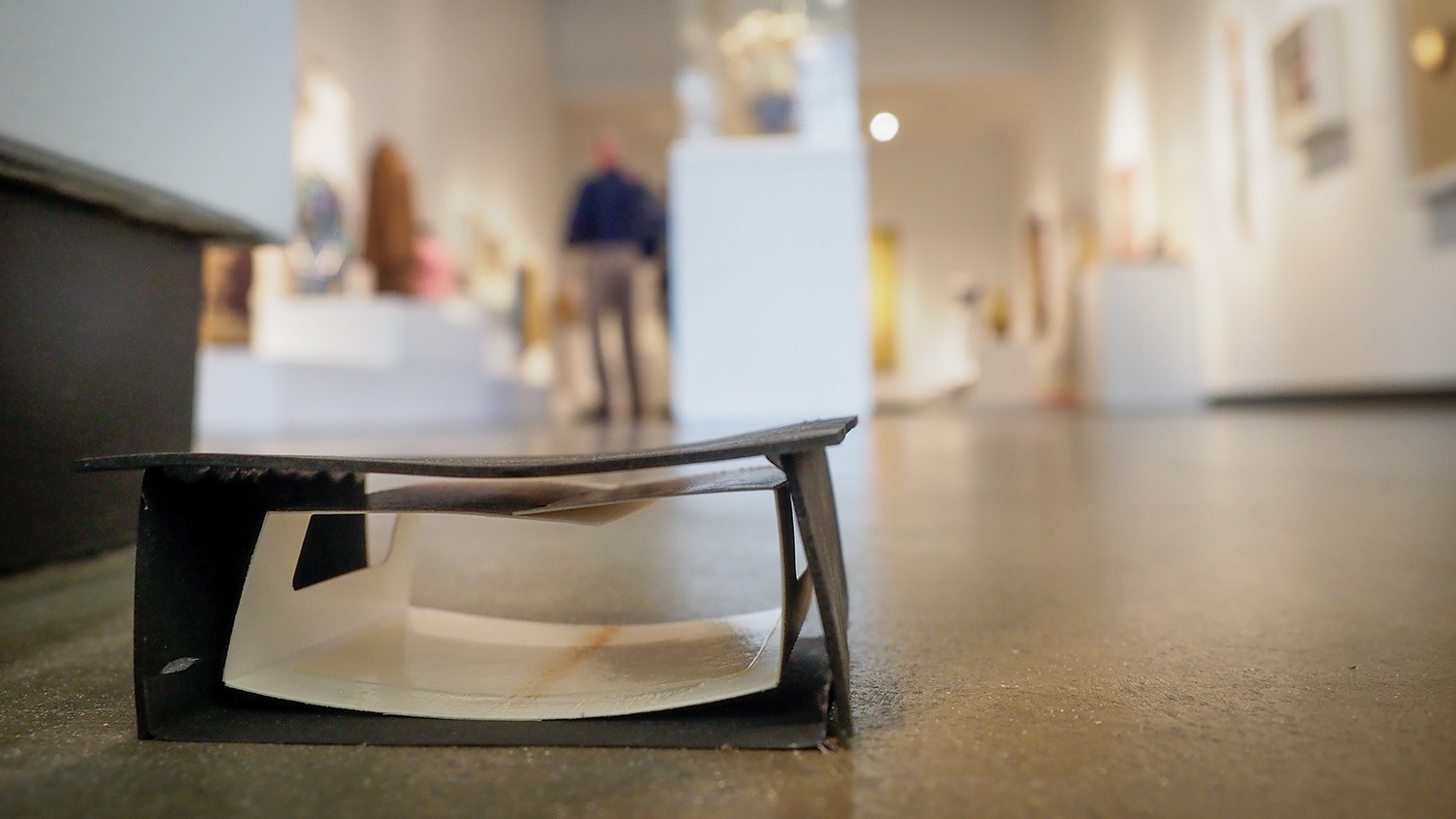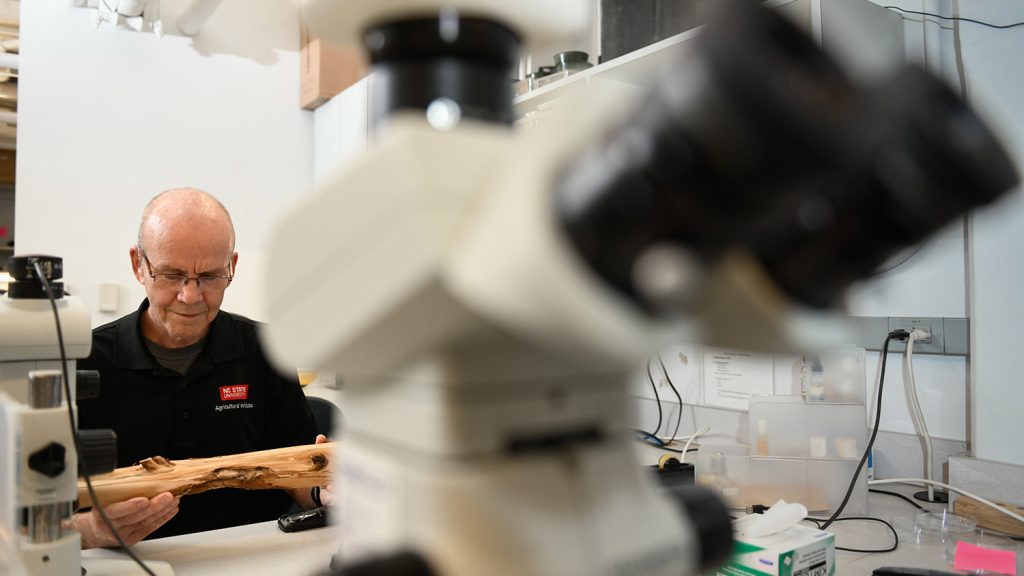Stopping Bugs With a Taste for Art
The Gregg Museum takes a scientific approach to managing invasive pests.

An exhibit at the Gregg Museum of Art & Design is playfully titled, “All That Glitters: Spark and Dazzle From the Permanent Collection.” So it’s no wonder the assortment of textiles, jewelry, pottery and other shiny objects is a feast for the eyes.
But for some visitors to NC State’s recently renovated museum, the collection is more than a celebration of beauty and creativity. It’s potentially a midnight snack.
“Our collection provides a really great opportunity for learning and teaching and intellectual growth,” says Assistant Registrar Jordan Cao. “But also wonderfully delicious things for bugs.”
Protecting the Gregg Museum’s vast and eclectic collection from unwelcome critters is one of Cao’s most important — and challenging — responsibilities.

Thankfully, NC State is home to a leading authority on urban pests: Michael Waldvogel, an extension associate professor of entomology and plant pathology. And like all extension specialists, he was eager to lend his expertise to the problem at no cost.
“I enjoy the challenge,” he says. “I thought this would be a neat thing because this is a case of looking at art as a food source rather than for its aesthetics.”
Any number of bugs threaten the collection. Moths, of course, are connoisseurs of silk, linen and other fabrics. Carpet beetle larvae have a taste for skins, furs, feathers and wool. And even though ladybugs won’t nibble on works of art, they can still do damage.
“If you squish them, they leave a yellow stain,” Waldvogel says.
Waldvogel toured the museum with Cao, answered her questions and reviewed some common-sense, non-invasive measures to keep pests at bay. The good news is that the Gregg Museum was already doing all the rights things, he says. “And if it ain’t broken, don’t fix it.”

The museum follows best practices for a process called integrated pest management. It focuses on minimizing risks before insects get a foothold inside the building. Since both the collection and its visitors are precious, Cao explains, spraying pesticides inside the 24,000 square-foot building isn’t an option.
Integrated pest management isn’t a complex process, but it does require a high level of vigilance.
“Basically, we take into account the environment around us, what kind of critters live outside our building, as well as what’s in the collection,” she says. “We use all those factors to develop a plan for assessing and protecting ourselves from pests.”
When a new piece of art is acquired by — or loaned to — the museum, it doesn’t go directly into the collection. “Every object that comes in here is either frozen or isolated to make sure there are no pests,” Cao says.
Any item that can handle a temperature drop to negative 15 degrees Celsius is bagged and placed in one of the Gregg’s giant freezers for at least a week. More fragile pieces are sealed airtight and stored for three months.
Of course, there’s still a chance of bugs entering the building through the front door. But Cao has that covered, too. She points out small black cardboard boxes in the corners and along the baseboards of various rooms. They’re sticky traps that can stop bugs — literally — in their tracks.
“Every month I go through our 55 traps throughout the building and see what’s around,” she says. “We’re doing pretty well, but it’s a challenge. We have to keep a super close eye out for evidence of pests.”
Cao stops to admire an elegant, sheer evening gown designed by New York couturier Alfred Bosand. The strapless pale green chiffon and silk floor-length gown looks as pristine as the day it was created in 1978.
“We’re fighting the clock on everything,” she says. “Nothing’s meant to last forever. But we’re trying to make sure that these collections are accessible for people today while still simultaneously trying to make sure that they last for future generations.”
Editor’s note: This article was written in March, shortly before the COVID-19 pandemic prompted NC State to reduce campus operations. Although the museum is not open to the public at this time, staff continue to maintain the collection.
- Categories:


